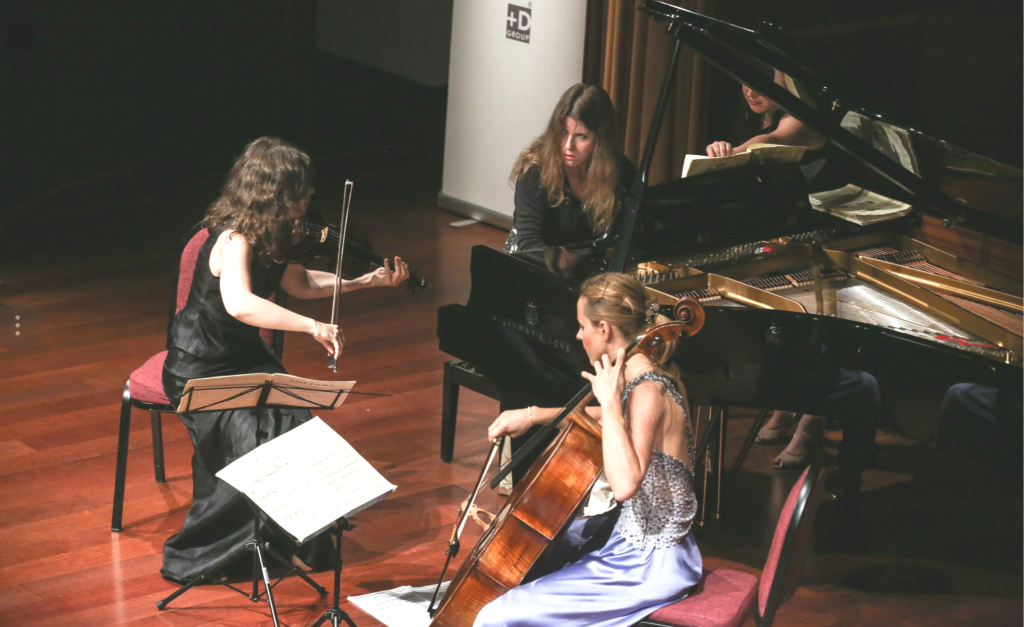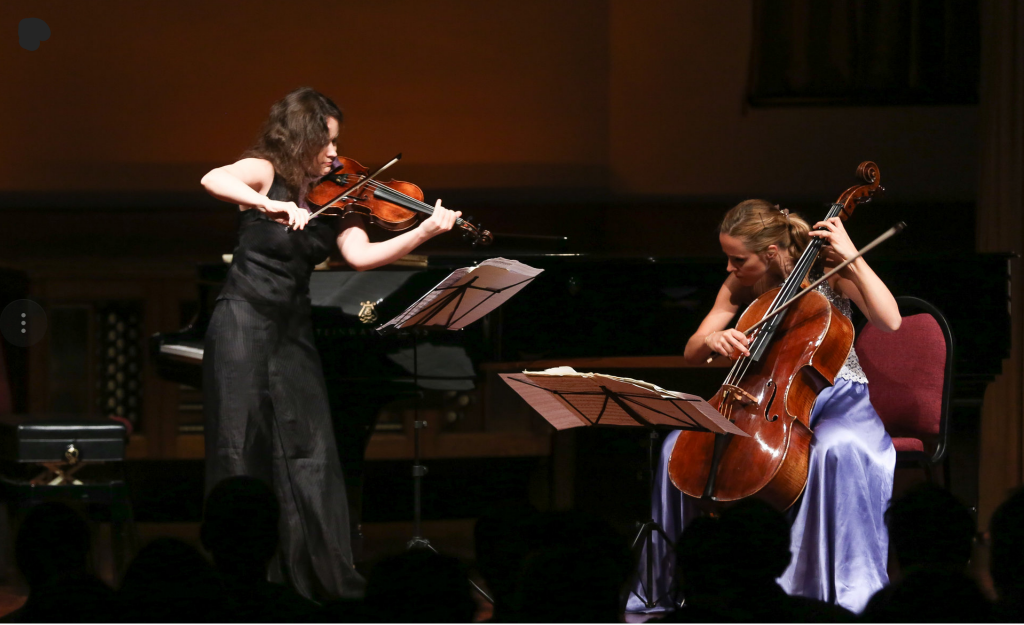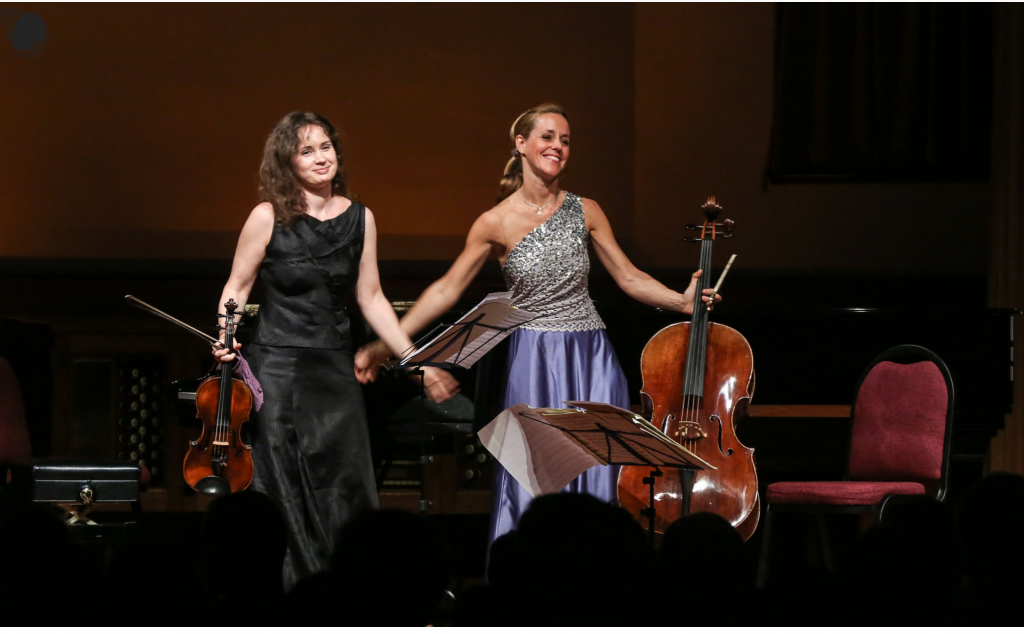Among all the fine music and impressive artists that are and have been part of the 43rd IKSV Music Festival this month, there was one that was by far the cause of my greatest enthusiasm: “Chamber Music with Stars” featuring Patricia Kopatchinskaja as the violinist, Sol Gabetta as the cellist, and Polina Leschenko as the pianist of a trio of ultra-stars.

Kopatchinskaja is one of my all time favorite artists of classical music. She is a renowned international virtuoso, and she is no stranger to the Turkish audience either. In fact, she is among the most popular, having gained immense popularity as a regular stage partner of Fazıl Say. She and Say also have an album together, 1001 Nights in the Harem. She is also a regular on Istanbul’s stages in myriad stage collaborations. I am, of course, an avid follower, and she each time, she continues to capture me with her distinct style, virtuosic skills, and -to top it off- her cute and humble, but charismatic persona. And so, it was a delight to see her name among the artists of the festival.
And seeing Sol Gabetta printed on the page for the same program brought the evening to a whole another dimension! For the novice of classical music, Gabetta is one of the most admired names of the world of cello. My first encounter with her on stage was last year, again at the IKSV Music Festival, where she had put an end to my twenty-year old wait to witness a live performance of Bloch’s Prayer -the most delicate, intricate, and touching composition for orchestra and cello. And she had performed the most elegant and captivating version it I have yet heard as well. She has been an idol for me ever since then, and I will forever remain a fan.

It must not be difficult to imagine my zeal when I saw these two names together in the program. And, as a bonus, the evening featured Polina Leschenko on the piano. I had not yet had the chance to witness Leschenko on stage, but being a part of the evening was enough of a statement about her for me. A native of St. Petersburg with an international career spanning across Europe, into Carnegie Hall and the Sydney Opera House, she is a youthful looking virtuoso who already holds the title of professor of piano. I could not wait for my introduction to her live on stage as well.
The normally arduous commute to Bosphorus University seemed swift and easy that evening, and I arrived in plenty of time for the performance to take stage at the university’s Albert Long Hall, known for its hosting of top notch recitals such as the one to take place shortly.
I awaited in anticipation to see the synergy of Kopatchinskaja and Gabetta in a duet, as I had always seen Kopatchinskaja in pieces of zeal, vigor, wit, with staccato bowings, squeaky sounds, prestissimo meter or just plain unique, -read that bizarre- arrangements. Gabetta on the other hand, I had seen in performances where she played as soft as silk, with notes from her cello floating in the air with gentle timbre and sonority. My questions and anticipation were soon to be answered.

The evening started with Kopatchinskaja and Gabetta taking stage in a duet in Ravel’s Sonata for Violin and Cello. A composition with Allegro, Tres Vif, Lent, Vic avec Entrain movements. The Tres Vif (Very Fast/Vigorous) movement featured forte notes, broken staccatos and a rhythm rivalling those of the Kronos Quartet, with Kopatchinskaja and Gabetta engaging in an interchange of this lingo. Lent provided contrasting calm, serenity and sombreness. Both the violin and the cello started on low notes, and climaxed high up on the E’s and A’s (ie, the highest strings of the respective intruments). The evening started with Kopatchinskaja and Gabetta taking stage in a duet in Ravel’s Sonata for Violin and Cello. Vif avec entrain featured slurred staccatos and vif notes of dexterity and precision. I watched Gabetta in amazement in this new style, and marvelled once again at Kopatchinskaja’s dexterity of the violin.
In Smetana’s Piano Trio in G Minor (Op. 15), Leschenkonko. The highest positions of the G were explored in the violin, and Leschenko and Gabetta joined in a composition that bedazzled, both for its beauty of melody and intricacy of composition. Moderato assai (Moderate enough), – Allegro, ma non agitato (Fast but not agitated) ….. The composition was impeccable throughout. Fast but not agitated, moderate but not mundane… We held our breath and followed every single note with utmost attention and awe.
Mendelssohn topped off the already perfect program with his Piano Trio No. 2 in C Minor (Op. 66). It was a fiery piece starting in Allegro energico e con fuco (Fast, with energy and fire) rhythm, going into an Espressivo Andante (Expressive Slow). Even the Scherzo (what I like to translate as “frenzied” or “rough”) movement was enchanting and the Allegro appassionato finale provided a passionate and enchanting closure to the frenzied notes of the presto sections.
The trio came back for “two” encores. The first was the allegro molto ma non troppo (fast but not too fast!) movement of what I heard as Marrinski… The audience applauded until they were made to come back for a second encore. Leschenko approached the piano, as we awaited in anticipation. And “ta-daam,” two closing notes, the kind that signals the end of a composition… That was it! We were left without our bonus encore, but still left the auditorium with a smile at this humorous and witty closure to the evening.









